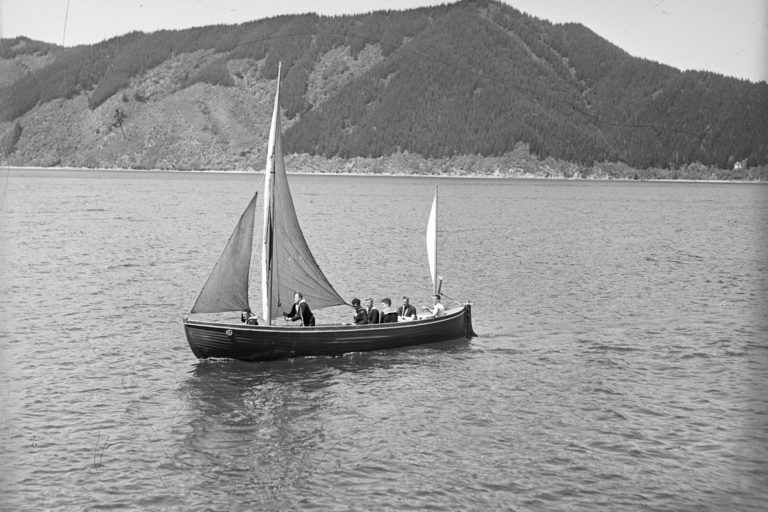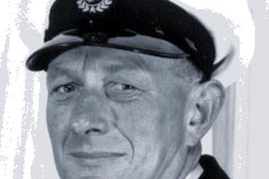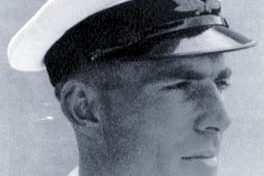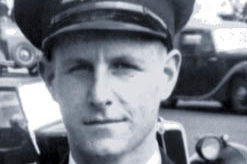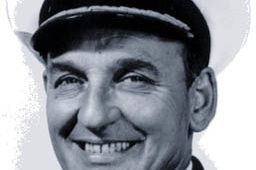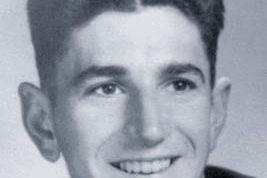With the outbreak of the Second World War, a training establishment for naval personnel to man the expansion of the New Zealand naval force was required. The Government was well aware that while the nation did not have a sizeable fleet to contribute to the war at sea, a steady supply of trained men could be provided.
In 1872 Motuihe Island was purchased by the Government for £2,500 and in 1873 was gazetted as a quarantine station for Auckland. It remained as such until 1914, when it was used as POW camp for Germans who had been captured with the seizure of the German colony of Samoa on August 1914. It accommodated the former Governor of Samoa, his staff and other aliens detailed under wartime regulations. The most famous POW was Count Felix von Luckner who managed to escape from Motuihe in 1917. After the First World War it returned to being a quarantine station and in the 1930s a children’s health camp was located on the island. At this time it was also administered as a domain for recreation purposes.
Establishment of Tamaki
With the outbreak of the Second World War, a training establishment for naval personnel to man the expansion of the New Zealand naval force was required. The Government was well aware that while the nation did not have a sizeable fleet to contribute to the war at sea, a steady supply of trained men could be provided. This would require a training establishment near to the naval base at Devonport. The naval base did not have sufficient space and the infrastructure to support training operations.
In December 1940 the government approved the use of the old quarantine station at Motuihe Island in the Hauraki Gulf and the New Zealand Naval Board was authorised to take control of Motuihe Island for the establishment of a training base. Due to the suitable location and size of Motuihe it was sufficient distance from the population so as not to interfere with the smooth running of the training programme, but close enough that supplies and libertymen (a sailor who was given permission to go ashore) could have access to the naval base and Auckland city. The existing buildings on Motuihe that were built by the Health Department were readily converted into barracks. In addition, there were good facilities for boat training, parading, and recreation.
On 20 January 1941 the shore establishment was commissioned into service as HMS Tamaki for training of the men for naval service with the RNZN. Tamaki’s motto was ‘Ake Ake Kia Kaha’ – Forever be strong. The first commanding officer was Commander Dennistoun DSO, a Royal Navy officer who had come out of retirement. Tamaki would train those men who had enlisted for service with the Royal New Zealand Navy as well as all those who were ‘hostilities only’ volunteers. It was planned that 900 trained personnel would pass through Tamaki for service with the Royal New Zealand Navy. By 1945 over 6,000 men and women had been trained at Tamaki representing over 60% of the personnel to have served with the RNZN during the Second World War. The first trainee was Ordinary Seaman Norman H. Ambler who arrived on 20 January 1941.
Up to 25 men formed a class for basic training as ordinary seamen at Tamaki. Men who had volunteered for service in the Fleet Air Arm also passed through the establishment before they were sent overseas for flight training. Men who were Scheme B volunteers had their basic training at Tamaki before they too went overseas to the United Kingdom for officer training. After the completion of basic training, some men would be sent to HMNZS Philomel for specialist training. Stokers, Telegraphist, Radar Operators, Coders, Supply assistants, Cooks, and Signallers were given branch instruction at Tamaki.
In February 1941 the training Division marched up Queen Street. This was the first public occasion for Tamaki. Large crowds turned out for the march and the press at the time reported many positive comments on the appearance of the naval trainees. On 3 March 1941, a party from Tamaki provided the Guard of Honour for the first visit to Auckland of Sir Cyril Newall the Governor General of New Zealand. The initial classes of trainees were sent to HMS Sultan the naval base in Singapore and many took part in the defence of Singapore.[1] Others were sent to Trincomalee naval base in Ceylon (now Sri Lanka).
HMNZS Tamaki remained in service through to the end of the Second World War. After the war it was retained as a training establishment. All men and women who enlisted with the RNZN in the late 1940s and 1950s passed through Tamaki and completed their Basic Training there. However, by the 1960s the RNZN was facing major costs in refurbishing the establishment but attempts to move were rebuffed by Wellington. However, after a visit to the Army camp at Narrow Neck, the Minister of Defence approved the closing down of Motuihe Island. He came to this decision reportedly after seeing two army NCOs playing golf at Narrow Neck.
Up until 1988 naval cadets would visit Motuihe Island and the Padre’s House as part of their training.
Narrow Neck was sited on land that had been purchased in 1886 and by 1889 Fort Takapuna was constructed on the site. Prior to the First World War it was used for Volunteers and Territorial Forces for training purposes with the guns that were installed in the fort. During the First World War a main camp was constructed for use as recruit depot, including the Māori and Pacific Island pioneer units of NZEF. At the end of the Second World War, it was the HQ for Territorial Units and accommodation for Regular Force personnel in Auckland Area. In 1958 the Narrow Neck Military Camp was renamed Fort Cautley.
After approval was granted the training base at Motuihe was closed down and Tamaki relocated to Narrow Neck. At that time there was still a strong army presence. During the flag raising ceremony to commission Narrow Neck as HMNZS Tamaki on 26 September, what was to become the Administration Block, was still divided into flats and the slightly bemused residents watched the ceremony from their windows. Other facilities also moved to Narrow Neck included Officers and Trades training schools. In 1968 the accommodations were upgraded, and the Officers’ Mess extended with the work being undertaken by the Army engineers. The site was in continuous use until 1993 when the Basic Common Trainees, the first navy unit was moved from HMNZS Tamaki to the North Yard of HMNZS Philomel.
At the turn of the new century, as part of a major reform of the Naval Command structure, HMNZS Tamaki ceased to exist. In November 2000 Philomel assumed responsibility for the whole of the naval base and facilities. With the development of the North Yard at HMNZS Philomel, only the Officers and Trades training remain at Narrow Neck.
The approximate number [2] trained at Tamaki:
Between January 1941 and August 1945 – 8,900[3]
Between August 1945 and September 1963 – 6,400.
Timeline
Sources:
[1] A number of these men would also become POWs following the fall of Singapore in February 1942.
[2] No women were ever under training at Tamaki during its commission at Motuihe & Narrowneck up to 1979
[3] Not every man who joined the RNZN in the war was trained at Tamaki. For example Scheme B recruits & VR men were trained at their VR depots in Auckland or in England once they arrived there.


![HMNZS Tamaki Colours 1951 [ABZ 0095 RNZN Museum] HMNZS Tamaki Colours 1951](https://navymuseum.co.nz/wp-content/uploads/history_hmnzs_tamaki-1-330x208.jpg)
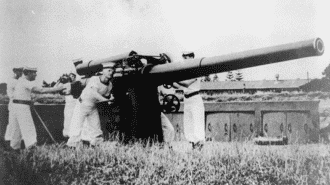
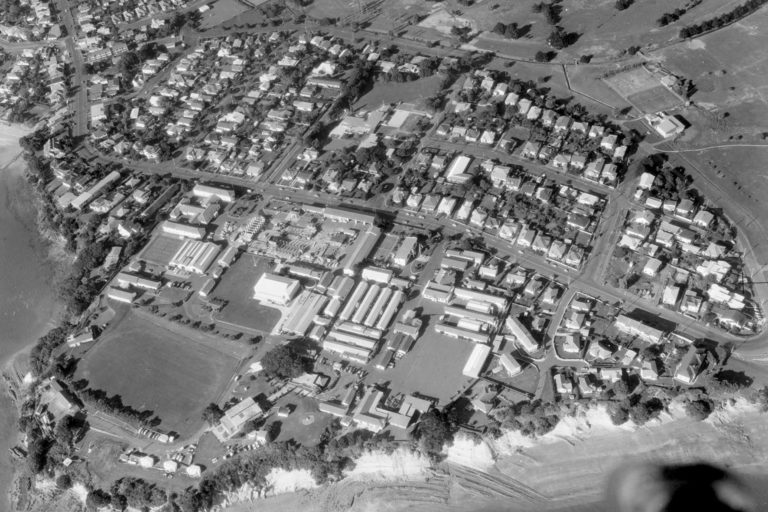
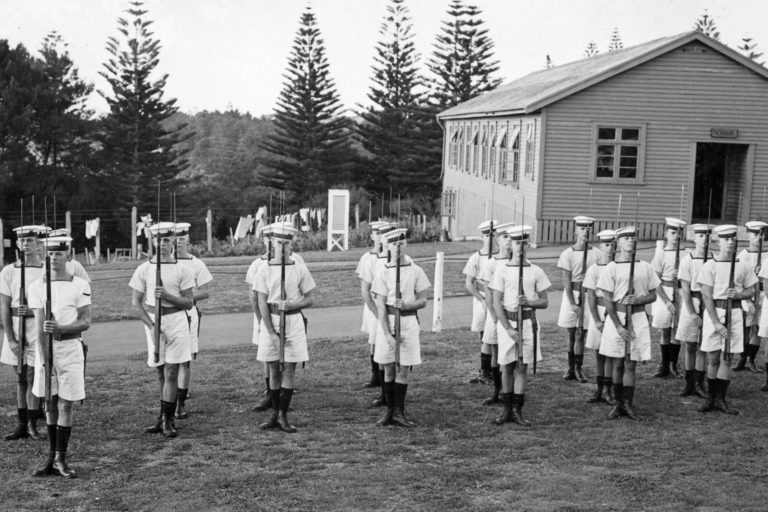

![Amokura Training Ship Amokura [formerly HMS Sparrow]](https://navymuseum.co.nz/wp-content/uploads/amokura.jpg)
